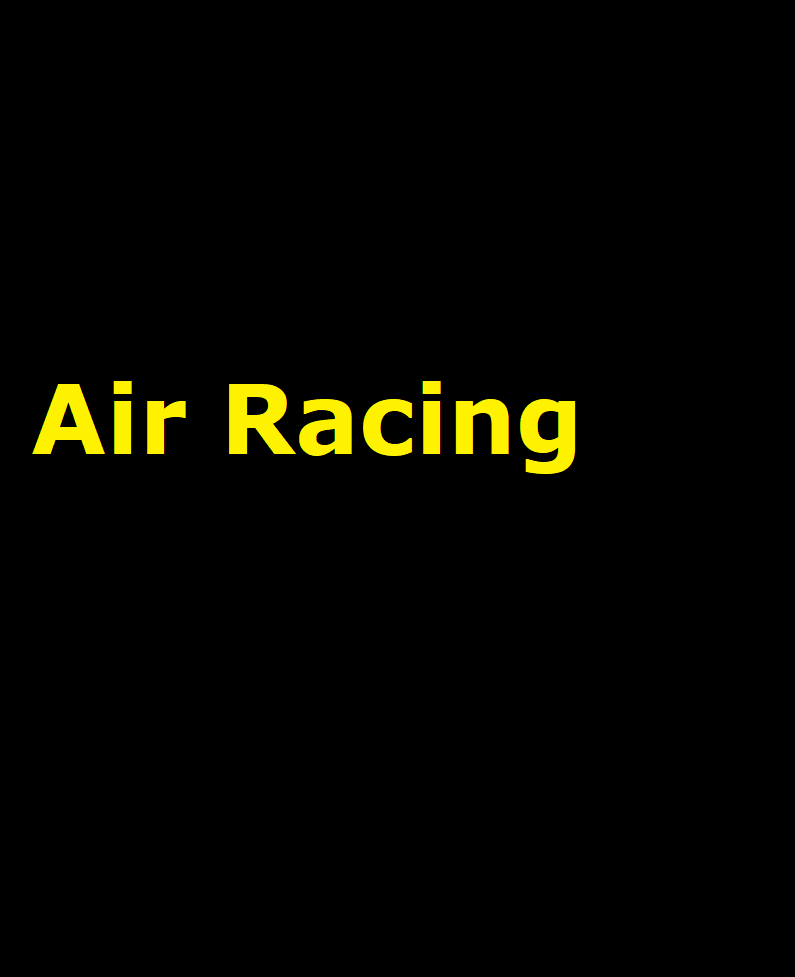
When it comes to sports, most people immediately think of traditional games like soccer, football, or basketball. However, there’s an adrenaline-pumping world of sports that takes place high above our heads in the wide-open skies – sports air racing. These high-speed competitions are a unique blend of technology, skill, and sheer courage, offering a breathtaking spectacle that has been captivating audiences for decades.
Sports air racing is a thrilling and fascinating discipline that combines the power of cutting-edge aircraft with the piloting skills of elite aviators. In this article, we will explore the history, the types of aircraft used, the key racing events, the challenges faced by pilots, and the future of sports air racing.
A Brief History of Sports Air Racing
Sports air racing can trace its roots back to the early 20th century when aviation was still in its infancy. As soon as people realized the potential of aircraft, they began to organize races and competitions to showcase the capabilities of these groundbreaking machines. In 1909, the Gordon Bennett Cup, a prestigious international air race, was established. This competition marked the birth of modern sports air racing, and it attracted the best aviators from around the world.
One of the most iconic air races in history is the Schneider Trophy, which began in 1913. This event was specifically focused on seaplanes, with a focus on speed and innovation. It played a crucial role in driving advancements in aircraft design and engine technology.
In the United States, the National Air Races became a staple of aviation entertainment in the 1920s and 1930s. Pilots pushed the limits of their aircraft and abilities, and their daring feats attracted large crowds.
After a hiatus during World War II, sports air racing made a comeback in the post-war era with events like the Reno Air Races and the Red Bull Air Race World Championship. These races continued to push the boundaries of technology and pilot skill, ensuring the sport’s survival and growth.
Types of Aircraft Used in Sports Air Racing
Sports air racing features a variety of aircraft specially designed for speed and agility. These aircraft are divided into different classes, each with its unique characteristics and regulations. Some of the most common classes include:
-
Formula One: These are lightweight, single-seat, and highly modified aircraft. Formula One planes are known for their agility and speed. The racing planes are typically powered by small, high-performance piston engines and feature sleek aerodynamic designs.
-
Unlimited Class: This class allows for a wide range of aircraft, including vintage and World War II-era warbirds. These planes are heavily modified for racing and can reach incredible speeds. The Reno Air Races, held annually in Nevada, are famous for their Unlimited Class competitions.
-
Red Bull Air Race: This was a popular air racing series that used specially designed aerobatic aircraft. Unfortunately, the series was discontinued in 2019, but it had a strong following and provided breathtaking displays of precision flying.
Key Racing Events
Sports air racing events are held worldwide, showcasing the diversity and excitement of the sport. Here are a few of the most renowned races:
-
Reno Air Races: Held in Reno, Nevada, this event is the world’s fastest motorsport. It features a variety of classes, including the Unlimited Class, T-6 Class, and Formula One Class. The event attracts pilots and racing enthusiasts from around the world and offers a unique blend of competition and nostalgia.
-
Red Bull Air Race: This series was an international spectacle that combined high-speed racing with precision aerobatics. Pilots navigated challenging obstacle courses in aerobatic aircraft, and the races were known for their breathtaking maneuvers. Although the series is no longer active, it left a significant mark on the world of sports air racing.
-
Schneider Trophy: This historic event, which initially focused on seaplanes, played a vital role in advancing aviation technology. The trophy was awarded to the nation that built the fastest seaplane, leading to the development of high-speed aircraft and revolutionary designs.
Challenges Faced by Pilots
Sports air racing is not for the faint of heart. Pilots in these high-speed competitions face a unique set of challenges that require extraordinary skill and precision. Some of the key challenges include:
-
High G-Forces: Racing planes can pull extreme G-forces during tight turns and rapid maneuvers. Pilots must undergo rigorous training to build resistance to these forces and avoid losing consciousness.
-
Low Altitude Racing: Air races often take place at low altitudes, close to the ground. This increases the risk and requires pilots to maintain a constant awareness of their surroundings.
-
Navigational Precision: Racing courses are filled with pylons, gates, and other obstacles that must be navigated with split-second precision. A slight mistake can be the difference between victory and disaster.
-
Mechanical Reliability: Racing planes are highly modified and pushed to their limits. Mechanical failures can lead to catastrophic consequences, so maintenance and reliability are paramount.
-
Weather Conditions: Weather can be unpredictable, and pilots must be prepared to adapt to changing conditions. Rain, wind, and turbulence can all affect the outcome of a race.
The Future of Sports Air Racing
Sports air racing continues to evolve and adapt to the challenges of the 21st century. While traditional events like the Reno Air Races remain popular, there are also new and exciting developments on the horizon. Some of the key trends shaping the future of sports air racing include:
Elevate your game with a dedicated sports player usain bolt and arnold schwarzenegger. Achieve excellence, set records, and inspire with exceptional skill and performance
-
Electric Racing: Electric aircraft are gaining momentum in various aviation sectors, and sports air racing is no exception. Electric racing planes promise to be quieter, more environmentally friendly, and potentially faster. As battery technology advances, we can expect to see electric racing classes emerge.
-
Virtual Reality and Broadcast Innovations: With the help of virtual reality and advanced broadcasting technology, spectators can experience the thrill of air racing in unprecedented ways. Immersive experiences, 360-degree cameras, and augmented reality overlays enhance the viewer’s connection to the sport.
-
Expansion of International Competitions: Sports air racing has traditionally been popular in the United States and Europe, but it is gaining traction in other parts of the world, including Asia and the Middle East. As interest grows, we can expect to see more international events.
-
Youth Outreach and Training Programs: To ensure the future of the sport, initiatives aimed at engaging and training young pilots are becoming more prevalent. Programs that provide opportunities for aspiring aviators to get involved in air racing are crucial for sustaining the sport.
Conclusion
Sports air racing is a mesmerizing blend of technology, skill, and sheer adrenaline. With a rich history dating back over a century, the sport continues to captivate audiences and push the boundaries of aviation. From classic events like the Reno Air Races to the now-defunct but unforgettable Red Bull Air Race series, sports air racing showcases the best of human ingenuity and daring.
As the sport evolves, it’s exciting to see how new technologies and innovations are shaping its future. Whether through the rise of electric racing or the expansion of international competitions, sports air racing remains a thrilling and enduring spectacle in the world of sports. So, keep your eyes on the skies and be prepared to witness the breathtaking feats of pilots who race among the clouds.




